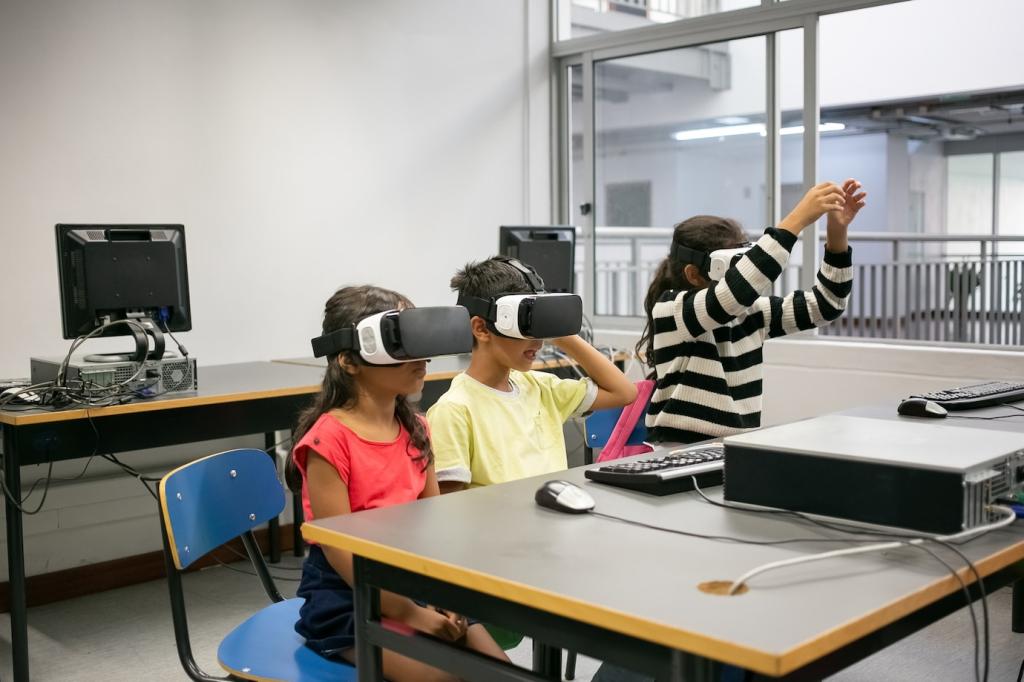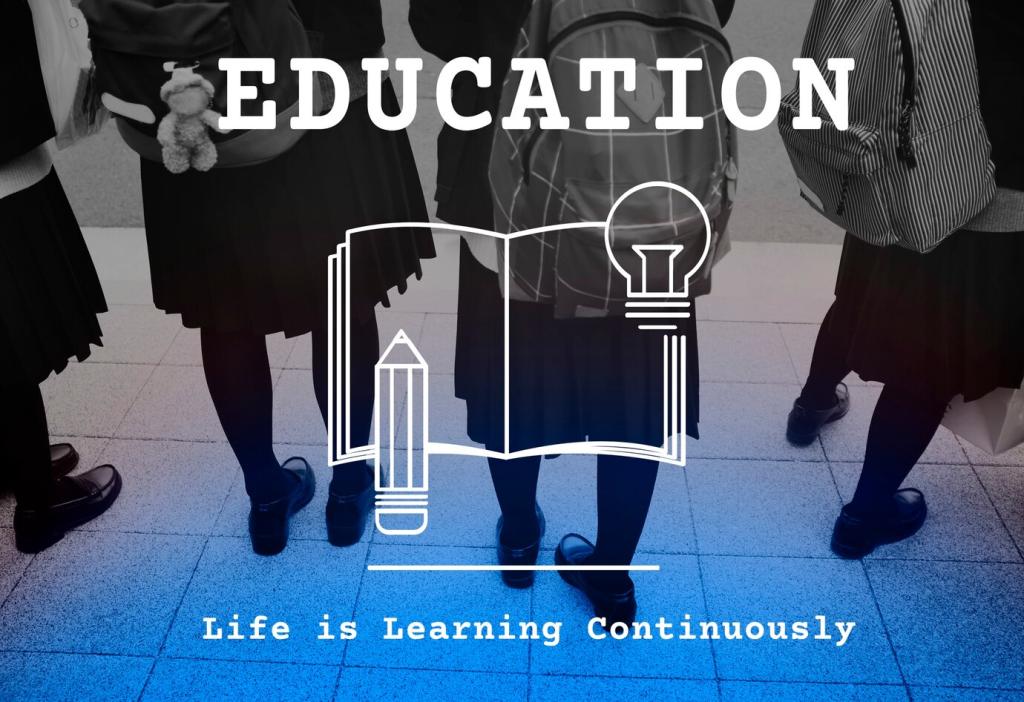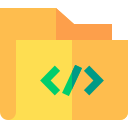
Open Source and the Evolution of Programming Curricula
The journey of programming education has been profoundly transformed by the rise of open source. As software development practices evolve, so too do the expectations and requirements of programming curricula worldwide. Open source paradigms have not only diversified the tools and frameworks students learn but also reshaped collaborative, real-world experiences within the classroom. This page explores how open source is rewriting the rulebook on learning to program, fostering communities of innovation, and bridging the gap between academic theory and industry practice.

From Theory to Practice
Previously, programming courses largely centered on algorithmic logic, syntax, and mathematical underpinnings. Universities often structured learning around theoretical constructs, with practical application taking a secondary role. This approach, while building strong conceptual foundations, sometimes left students ill-prepared for collaborative or project-based development found in the workplace. However, the emergence of open source began to challenge this norm by introducing a participatory model for learning, where contributions to real projects enhanced classroom theories with hands-on experience.

Restricted Access and Proprietary Barriers
In earlier eras, programming education faced limitations due to the proprietary nature of software tools and resources. Academic institutions often had to navigate licensing fees and restrictive usage rights, which constrained the variety and depth of programming environments offered to students. As a result, the scope of exposure was narrow, and adaptability to evolving technologies was sluggish. Open source began to dismantle these barriers, granting educational establishments and students unprecedented access to a vast array of tools without prohibitive costs or legal hurdles.

The First Steps Toward Community-Based Learning
Historically, programming was a largely isolated pursuit within educational institutions. The rise of the open source movement in the late 20th century introduced the concept of community-driven learning. For the first time, students and educators alike were able to engage directly with worldwide developer communities, collaborate on tangible projects, and benefit from peer-to-peer knowledge exchange. This shift laid the groundwork for integrating open source methodologies into academic programming curricula.
Open Source: Breaking Down Educational Boundaries
Widening Access to Cutting-Edge Tools
With open source, students can freely explore a broad landscape of programming languages, frameworks, and libraries that are actively used in the industry. Instructors are no longer restricted to teaching legacy or proprietary technologies due to budgetary limitations. Instead, curricula can include modern, in-demand resources, enabling students to build up-to-date portfolios and expertise. This accessibility ensures that what is taught in classrooms mirrors the dynamic and rapidly changing tech landscape outside academia.
Collaborative and Inclusive Learning Environments
Open source philosophies naturally extend collaborative principles to students. Rather than working solo on contrived assignments, learners tackle real-world challenges together, often contributing to projects with international teams. This experience not only strengthens technical skills, such as version control and code review, but also fosters inclusivity, as students from diverse backgrounds and geographical locations work side by side. The result is a more holistic education that values both technical proficiency and community engagement.
Rapid Iteration and Curriculum Agility
Because open source software is constantly being developed and improved, programming educators can rapidly adapt syllabi in response to industry changes. Updates and new technologies can be incorporated without waiting for licensing approvals or vendor releases. This agility allows curricula to remain current and relevant, preparing students to quickly adopt new tools or libraries in professional environments and to participate in the ongoing evolution of software itself.

Previous
Next
Open Source Tools in the Classroom

Version Control as Fundamental Literacy
Git and similar open source version control systems have become foundational skills in programming curricula. Students learn to track changes, manage code branches, and resolve conflicts—core competencies for any modern developer. By embedding these practices early, educators ensure that graduates are proficient in both individual and collaborative development endeavors, easily integrating into contemporary workflows.

Cloud-Based Development Environments
Open source-powered cloud environments such as JupyterHub, VS Code, and Eclipse Che have redefined how coding is taught and learned. Students can now write, test, and deploy code from any device, lowering barriers to entry and promoting accessibility. Instructors, in turn, benefit from streamlined class setup and the ability to monitor student progress in real time, making classroom management more efficient and interactive.

Automated Testing and Continuous Integration
Modern programming coursework leverages open source automated testing frameworks and continuous integration tools to teach best practices in software quality assurance. Students are introduced to unit testing, integration pipelines, and deployment strategies, which are vital for scalable software development. This experiential learning ensures that future developers can meet industry demands for reliability and maintainability from their first day on the job.
The Role of Open Educational Resources
Freely Accessible Textbooks and Tutorials
Open textbooks and interactive tutorials in programming languages, algorithms, and systems design have become widely available at little to no cost. This democratizes access to quality materials, allowing students from various socioeconomic backgrounds to participate fully in programming education. Institutions can customize and localize these resources, tailoring content to their communities’ specific needs and contexts.
Video Lectures and MOOCs
Massive open online courses (MOOCs) and video lecture series have dramatically widened the reach of programming curricula. Students can learn from renowned educators and industry experts worldwide, at their own pace. Many of these resources are open source or openly licensed, fostering a culture of continuous, self-driven learning that transcends geographic and institutional boundaries.
Community-Driven Curriculum Development
Open educational resources encourage collaboration not only among students but also between teachers and content creators from around the globe. Curriculum updates, new exercises, and translations can be incorporated rapidly, leveraging crowd-sourced knowledge and best practices. This ongoing collective effort ensures programming education remains responsive, relevant, and innovative in a fast-paced digital age.
Challenges and Considerations in Open Source Integration
Evaluating student performance in open source contexts is complex. Contributions may range from code to documentation, community support, or project leadership, and gauging quality and effort requires nuanced rubrics. Educators must balance assessing technical mastery with recognizing soft skills, adaptability, and sustained engagement, ensuring that all facets of participation are acknowledged and rewarded.

Join our mailing list
